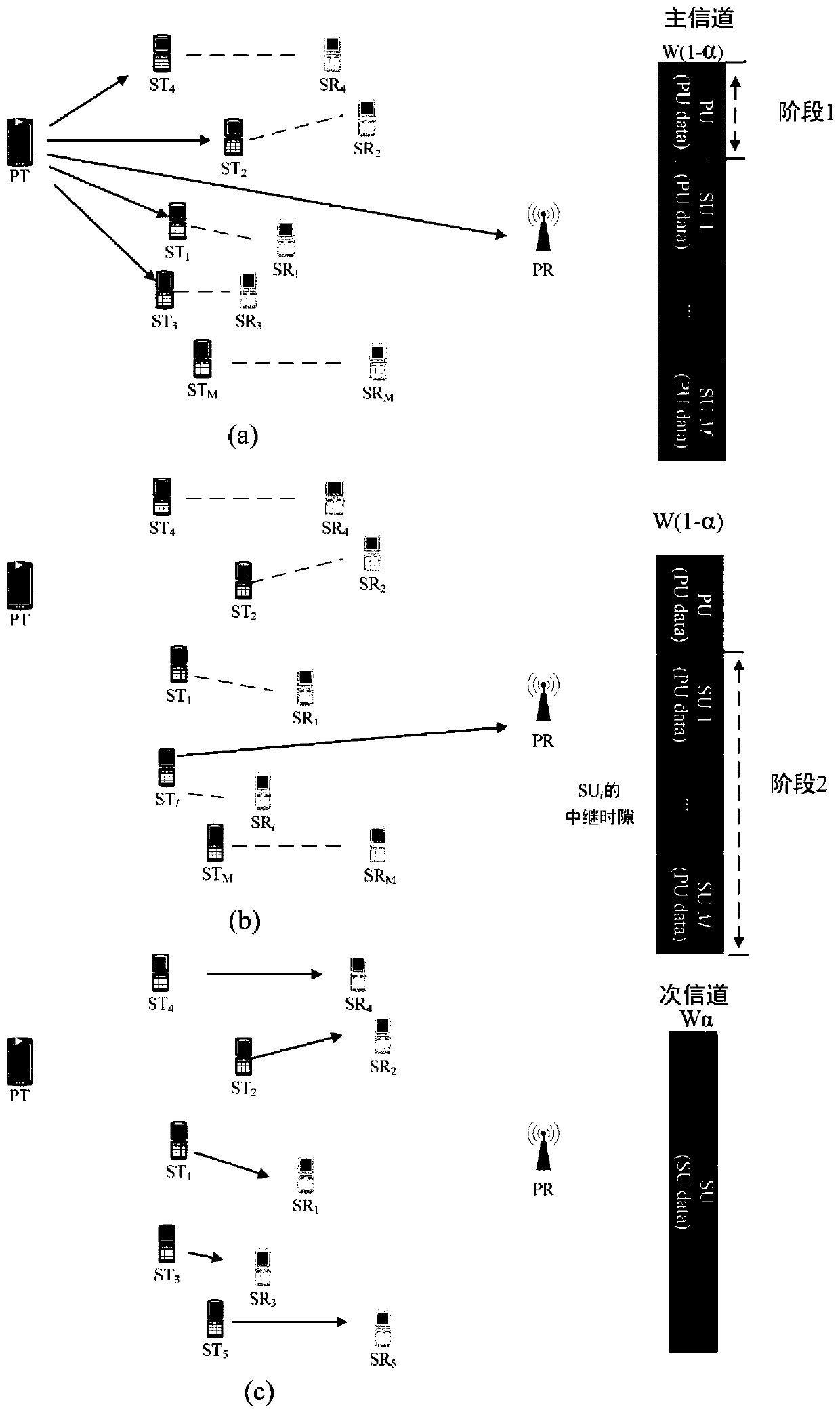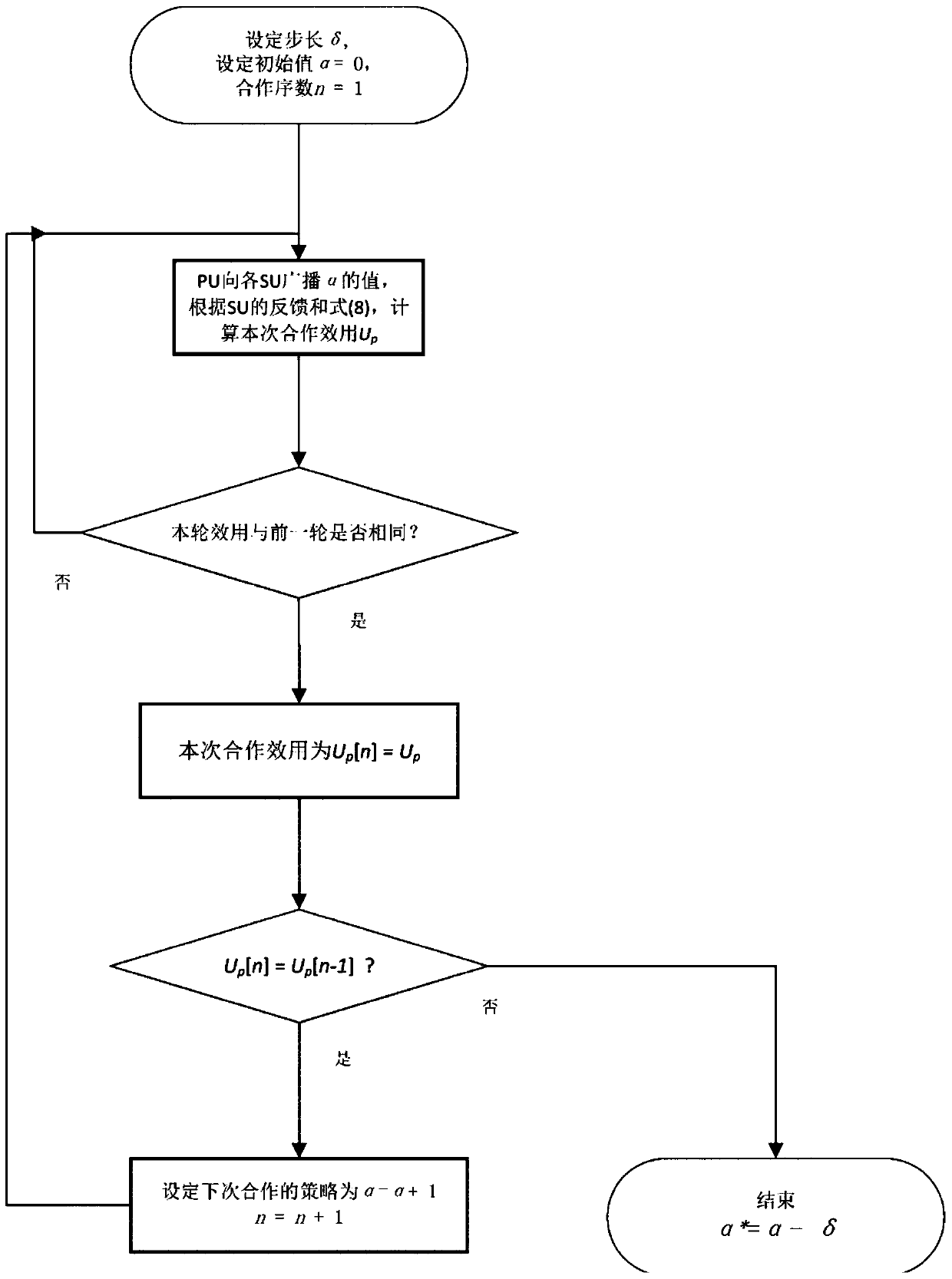A Method for Energy Efficient Resource Allocation in Cooperative Cognitive Wireless Networks
A cognitive wireless network and resource allocation technology, which is applied in the field of energy-efficient resource allocation in cooperative cognitive wireless networks, can solve problems such as SU inapplicability and incomplete information, and achieve the effect of increasing fairness and improving energy efficiency
- Summary
- Abstract
- Description
- Claims
- Application Information
AI Technical Summary
Problems solved by technology
Method used
Image
Examples
Embodiment 1
[0053] like figure 1 As shown, the energy-efficient resource allocation method for a cooperative cognitive wireless network provided in this embodiment considers the problem of spectrum and power allocation between primary users and secondary users in a cooperative cognitive wireless network. The authorized spectrum of the primary user is divided into two parts, which are called the primary channel and the secondary channel respectively. The secondary channel is assigned to the secondary user to transmit data. It is used for the primary user to transmit data, including the primary user transmitting its own data and the secondary user relaying the primary user's data, so as to improve the energy efficiency of the primary user. The transmission power allowed by each secondary user on the secondary channel is proportional to the transmission power of the secondary user providing relay services to the primary user, because the relay transmission power reflects the contribution mad...
Embodiment 2
[0105] like figure 1 As shown, the key to cooperative spectrum sharing is how to determine the transmission power allowed by the SU in the sub-channel. Apparently the PU hopes that all SUs can use more power when relaying their data to increase the data rate of the PU, but the contribution of the SU to the relay transmission depends not only on the transmission power, but also on the channel conditions between it and the PU. To explain this, first analyze the capacity of the PU. The signal-to-noise ratio received by the PR in the first time slot directly transmitted by the main channel has
[0106]
[0107] Among them, W is the total bandwidth of the PU licensed spectrum, α is the proportion coefficient of the bandwidth relinquished from the PU to the SU as the sub-channel to the total bandwidth, and P p is the transmit power of the PU in the first time slot, h p is the channel gain between the PU sender and receiver, n 0 is the power spectral density of additive Gaussi...
Embodiment 3
[0180] In this embodiment, the transmission energy efficiency of the primary user and the spectrum utilization rate of the entire network are improved by implementing an energy-efficient resource allocation method for a cooperative cognitive wireless network.
[0181] like figure 1 As shown, a 10km×10km square area is selected as the network area, and the PT and PR are respectively fixed to the midpoints of a pair of opposite sides. There are M=5 SUs in the network area, the sending ends of each SU are randomly distributed, and the receiving end of each SU is randomly placed in a circular area with its sending end as the center and a small radius. Set the path loss factor to 2, the transmit power Pp of the PU=100mW, and the maximum power limit of the SU Unit energy cost of SU Noise power spectral density n0=10 -13 mW / Hz, the authorized total bandwidth owned by the PU is W=1MHz.
[0182] Figure 4 is the power convergence diagram of the PADSUA algorithm. Since each SU w...
PUM
 Login to View More
Login to View More Abstract
Description
Claims
Application Information
 Login to View More
Login to View More - R&D
- Intellectual Property
- Life Sciences
- Materials
- Tech Scout
- Unparalleled Data Quality
- Higher Quality Content
- 60% Fewer Hallucinations
Browse by: Latest US Patents, China's latest patents, Technical Efficacy Thesaurus, Application Domain, Technology Topic, Popular Technical Reports.
© 2025 PatSnap. All rights reserved.Legal|Privacy policy|Modern Slavery Act Transparency Statement|Sitemap|About US| Contact US: help@patsnap.com



